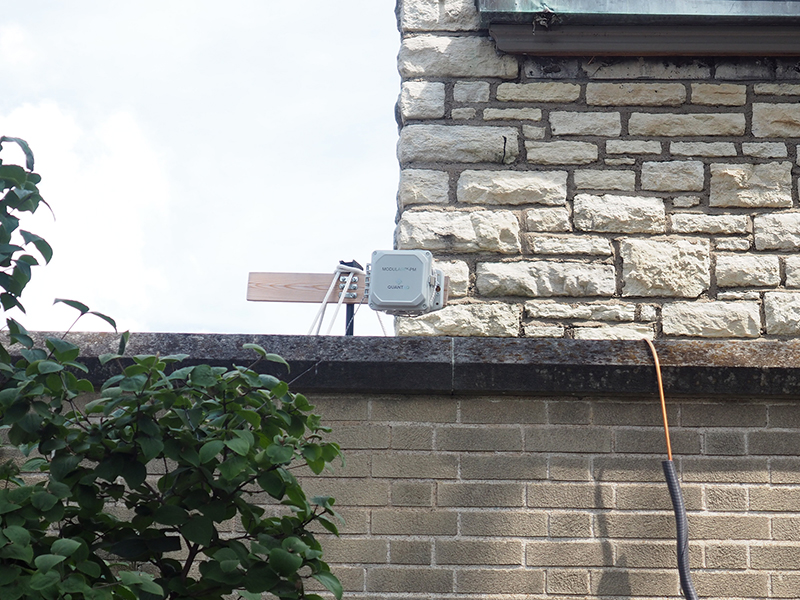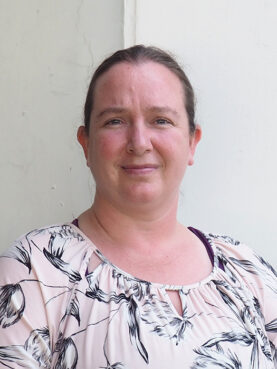(RNS) — A few weeks before speaking at a rally pushing for solutions to improve air quality in St. Louis, DeAndress Green was in the hospital, feeling like she was unable to breathe.
Green had suddenly begun feeling short of breath after spending some time in an industrialized north St. Louis neighborhood, where she was delivering food through DoorDash to families who lack transportation to grocery stores. When Green went to the hospital, doctors found blood clots in her lungs.
“I was in the hospital for a few days before the doctors figured out what was wrong,” she said at the July 23 rally, organized by Metropolitan Congregations United, a coalition of about 60 religious communities around St. Louis. Green works with MCU in its ongoing activism around local environmental crises. “That whole week, I lived in fear, planning for the worst.”
But for Green, a Black urban farmer and small business owner who had grown up in north St. Louis, this was but the latest in a lifetime of chronic respiratory problems — for her and for her family. All her family members suffer from asthma. She says she’s always known the cause: her neighborhood’s poor air quality.
Green grew up in the College Hill neighborhood, in government housing that was less than a mile from Procter & Gamble’s factory along the north St. Louis riverfront and other industrial facilities that burn metals or chemicals producing pollutants in the air. Trees were few and far between. The apartments in which she lived were plagued with black mold; the schools she attended had lead paint peeling from the walls. That’s also the case for many other members of the church she grew up in, Epiphany United Church of Christ, and other local congregations.

An example of one of the low-cost air pollution sensors at First Unitarian Church of St. Louis. Photo by Britny Cordera
Earlier this year, the multifaith coalition launched a new online air quality monitoring tool, tracking pollutants in the city in partnership with scientists at The Nature Conservancy; the Jay Turner Group, part of Washington University’s Department of Energy, Environmental and Chemical Engineering; and the university’s environmental studies program.
The community-based air quality monitoring initiative, AirWatch St. Louis, has been keeping track of what’s in the city’s air since December 2021. Low-cost sensors are placed on the roofs of MCU churches spread throughout the city to measure particulate matter, a mixture of solid particles and liquid droplets found in the air. Through the new digital map, the data collected by these sensors is publicly viewable.
MCU organizers say they see their efforts to collect and publish data on air quality as part of their spiritual commitment to racial and environmental justice. Since many religions believe that the Earth is sacred, created by a divine being, the effort to protect the environment brings congregations of varying backgrounds together to fight against climate change, according to Kentaro Kumanomido, an environmental justice organizer with United Congregations of the Metro East, another faith-based organization that worked closely with MCU on the air quality rally.

Beth Gutzler. Photo by Britny Cordera
Beth Gutzler, who has lived in houses with lead paint and currently lives near West Lake Landfill, where locals are concerned that trash smoldering underground is dangerously close to buried nuclear waste, leads MCU’s environmental justice team. She believes this project is critical to empower people in faith-based communities who are affected by industrial pollution, giving them the tools to take control of the fate of their neighborhoods through legislative action.
“Our goal is to bring people of multiple faiths together to work towards a common goal of changing policy for social and environmental justice,” she says.
According to Tyler Cargill, a doctoral student with the Turner Group, the spatial variety and community connection MCU churches offer have been central to this project. Some of the churches are in downtown St. Louis, while others are in Webster Groves, a suburb. Some churches are in areas with a high density of roads. Some are near parks. And others are near industries that release particulate matter into the air.
“By having a variety of placements of these sensors, we do get to see if the urban planning of St. Louis makes any difference for what we’re seeing with our air pollution,” Cargill said.

